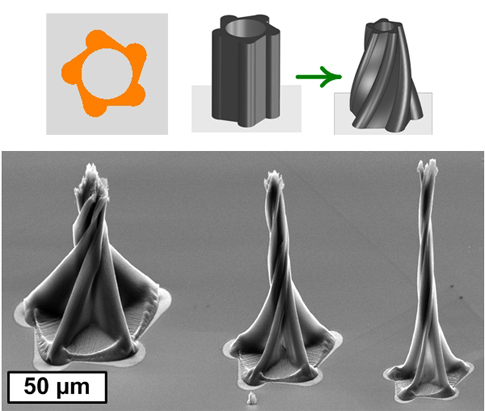Body
(University of Michigan: Ann Arbor, MI) -- Twisting spires, concentric rings, and gracefully bending petals are a few of the 3-D shapes that University of Michigan engineers can make from carbon nanotubes using a new manufacturing process.
|
ADVERTISEMENT |
The process, called “capillary forming,” takes advantage of capillary action, the phenomenon at work when liquids seem to defy gravity and travel up a drinking straw of their own accord. The miniature shapes, which are difficult if not impossible to build using any material, have the potential to harness the exceptional mechanical, thermal, electrical, and chemical properties of carbon nanotubes in a scalable fashion, according to A. John Hart, an assistant professor in the Department of Mechanical Engineering and the School of Art & Design.
Objects created by capillary forming could include probes that interface with individual cells and tissues, novel microfluidic devices, and new materials with a custom patchwork of surface textures and properties.

…
Want to continue?
Log in or create a FREE account.
By logging in you agree to receive communication from Quality Digest.
Privacy Policy.
Comments
More information...
Thanks for the interest in this work! If anyone would like to know more about the science behind this story, we've set the original research article free to access until the 21st of November; you can find it here: http://www.materialsviews.com/details/news/869853/Cover_Story_Capillary…
Adrian Miller
Advanced Materials
Add new comment